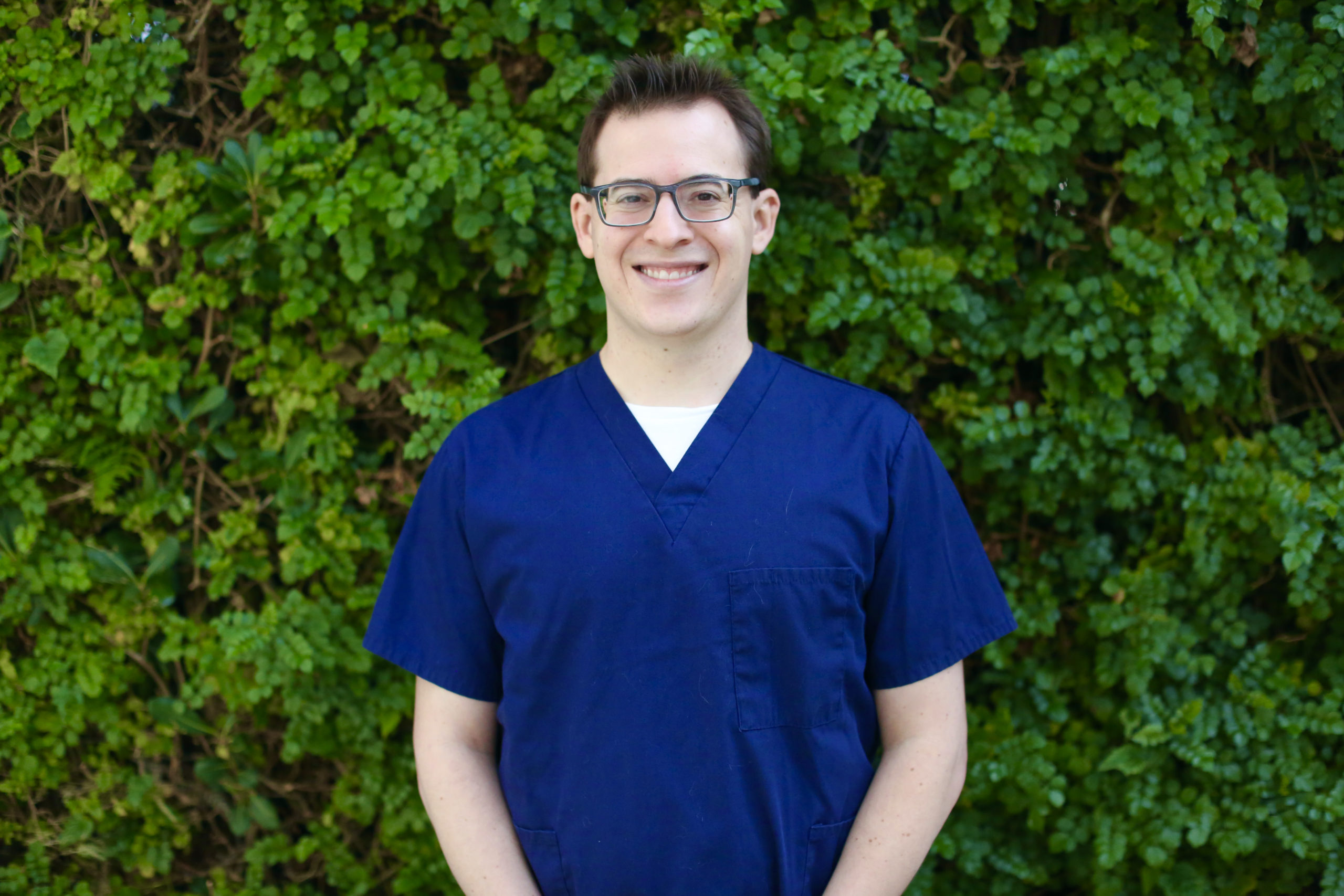02.22.2022
By uscbknpt
Paid in Full

How USC alumnus David Russak turned $352,000 in student loan debt into an effort helping physical therapists and other allied health pros up their personal finance game
BY DANIEL P. SMITH
February 18, 2022
ON THE DAY DAVID RUSSAK DPT ’14 RECEIVED HIS DPT DEGREE FROM USC in May 2014, he flashed a wide smile under L.A.’s warm sunshine, celebrating the achievement with family and friends.
Life, Russak thought, can’t get better than this.
With a degree from one of the nation’s premier DPT programs and an impending one-year neurologic physical therapy residency with Casa Colina Hospital and Centers for Healthcare, Russak oozed energy and optimism.
The promise of the future overpowered looming obligations, including student loan debt.
“Debt was out of sight, out of mind,” Russak admits.
Russak settled on a 25-year, income-driven repayment plan, deferring payments for the first six months of his residency even as interest continued mounting. Save leveraging his academic training to land a stable, well-paying job, Russak wielded no other strategies to manage his student loans.
Erasing that debt was the most liberating feeling I had ever experienced. It gave me the freedom of choice to do what I wanted personally and professionally.
—David Russak DPT ’14
In 2017, Russak stared at a student loan balance of $352,000, his nearly $1,000 monthly payments barely denting the hefty sum. Engaged to his now-wife, Julia, and envisioning some of the traditional markers of adulthood — starting a family and purchasing a home, in particular — Russak felt overwhelmed and regretted his lack of financial planning.
“That’s when I switched my mindset to paying off those loans,” he says.
DEBT PAY OFF: THE SIDE HUSTLES
A full-time physical therapist with Kaiser Permanente, Russak investigated side hustles, particularly higher-earning opportunities in which he could leverage his physical therapy skills. He began working in PRN home health and for Luna On-Demand Physical Therapy, a leader in at-home physical therapy treatment. As the miles climbed on Russak’s Subaru Crosstrek, the balance on his student loans dropped.
“I was making upwards of $8,000 a month on these side hustles, and almost every penny went to paying down student loans,” he says.
In November 2021, Russak submitted his final student loan payment. Though confetti didn’t from the ceiling, Russak nevertheless calls the moment “triumphant.”
“Erasing that debt was the most liberating feeling I had ever experienced,” Russak says. “It gave me the freedom of choice to do what I wanted personally and professionally.”
And it’s a moment Russak wishes he would have seized earlier.
“Going through this process, I realized how much I could have done differently had I been more well-informed,” he says.
DEBT PAYOFF: PAYING IT FORWARD
Powered by an accelerating passion for personal finance and a willingness to help others avoid the same stressful realities, Russak launched Money Mobilizer last November, a no-fuss, no-holds-barred blog arming allied health professionals and students with sound, relevant insights to make, manage and protect their money.
“Allied health professionals are so great at sharing professional information, so why not share information to improve our personal financial health as well?” Russak says.
Unlike the generalized, albeit worthwhile, advice dispensed by personal finance gurus like Dave Ramsey and Suze Orman, Russak tailors much of Money Mobilizer’s con-tent to physical therapists and their allied health peers.
I want others to be able to benefit from my experience, and I’m glad they can.
—David Russak DPT ’14
With a mix of honesty and humility, Russak details his own money management missteps and personal finance follies. Over his three years as a DPT student and one-year residency, for instance, Russak overlooked the financial implications of living in an apartment by himself, dined out often, shunned part-time work and neglected crafting a plan to address student loans.
“I didn’t take steps to put myself in a better financial position,” he says. “I just had tunnel vision.”
Russak’s website also includes discussions of post-graduate residencies, side hustles and professional liability insurance as well as the Money Mobilizer Personal Finance Checklist for Allied Health Clinicians and Students. The checklist outlines the key aspects of personal finance Russak believes allied health pros should understand and identifies helpful resources.
“This is a checklist I wish I had for myself years ago so that I knew what I didn’t know,” he says.
DEBT PAYOFF: A BETTER, HEALTHIER WAY FORWARD
Money Mobilizer has attracted readers from coast to coast and Russak regularly fields questions from practitioners as well as students about tackling student loan debt or evaluating different types of professional insurance. Others thank him for sharing his story and relay their own personal finance tales.
“I want others to be able to benefit from my experience, and I’m glad they can,” says the 32-year-old Russak, who became a father last August and recently left his full-time job to gain greater flexibility in the professional services gig economy.
Seeing so many aspiring and practicing physical therapists delaying personal and professional ambitions and feeling smothered by student loan debt — an average of $142,489, according to a 2020 report from the American Physical Therapy Association — Russak hopes Money Mobilizer empowers others with the personal finance information they need to find perspective, purpose and a plan.
“There is a better, healthier way forward,” he says. “My story shows that.”
PHOTO: Vanny Nguyen

